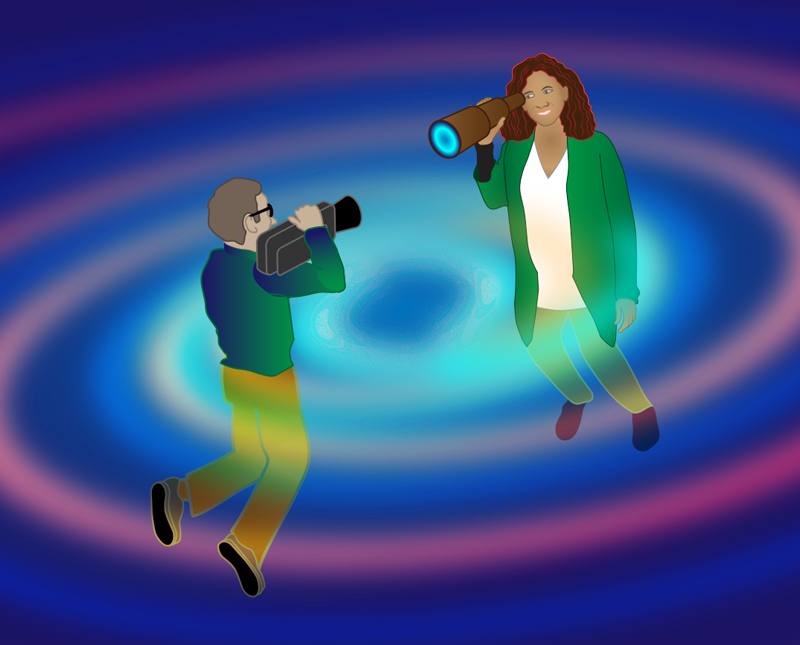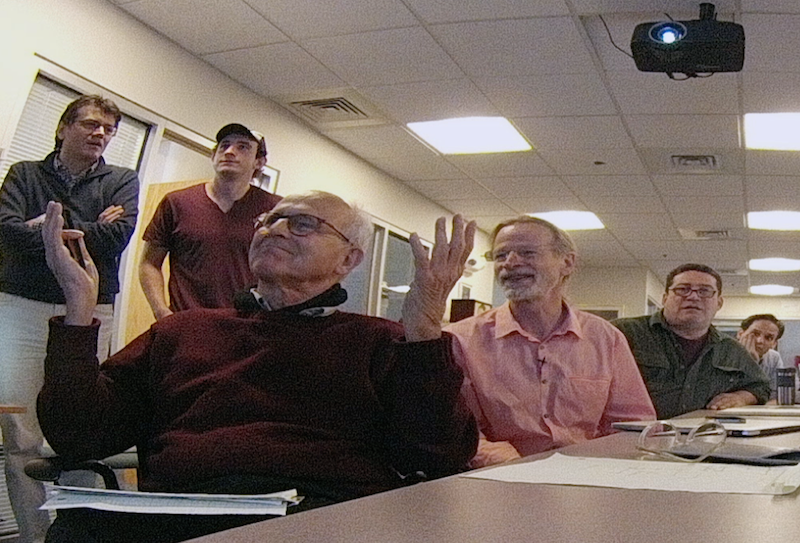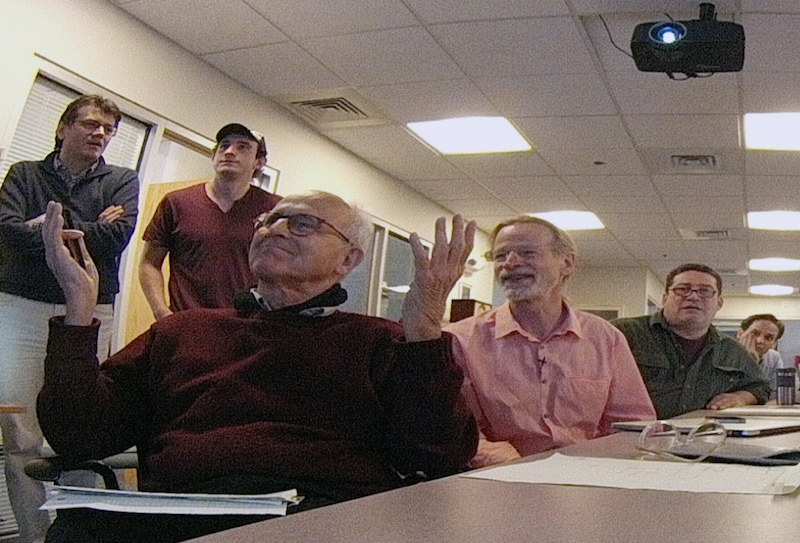Opinion: Filming the Thrill of Physics Discovery
When LIGO director David Reitze and future Nobel laureate Barry Barish invited me to make a documentary about LIGO’s search for gravitational waves, I knew it was an extraordinary opportunity. Not only did it seem likely that I could make a film about one of the greatest discoveries of physics, but I would also be able to capture the thrill, drama, and passion of science that so rarely are shown in science documentaries.
That emotion, that human side of research and discovery, is what I’ve always known separated the great documentaries from dry, unmemorable histories.
To me, the human side of science is not the glib observation that “scientists are human too,” with families and lovers. It’s the inherently human impulse to devote one’s life to research and discovery. In a letter to me, Jay Marx, the former director of LIGO, wrote that he hoped that books and films would give the public a better understanding of this human element. “Science at the forefront of knowledge is a very human cultural undertaking, with lots of feeling, drama,” he wrote. “It’s not a cold, mechanistic set of activities done by robotic nerds.”
To capture the human drama, I had to be there regardless of the sacrifice in terms of time or money. The best way to capture on camera the excitement of science and discovery is in the present tense, not in after-the-fact interviews or dramatic re-creations.
When we began filming the LIGO movie in August 2015, my hope was to conduct interviews over time as events unfolded. That choice would allow LIGO scientists, including future laureates Rai Weiss and Kip Thorne, to relate the events as they were happening. I started with Thorne, asking him only about the prospects of gravitational-wave astronomy and cosmology.
I knew that “being there” was the key to my approach from a long career documenting science on film. In 1991, I created the “Discover Magazine” series at the Walt Disney Company. Our first production was about the newly built Keck Observatory in Hawaii—then the largest telescope in the world, with its great mirror made up of 36 large hexagonal mirrors. Building this complex instrument at 14,000 feet struck me as an incredible, and risky, engineering achievement. To convey these risks, I placed the construction manager up inside the vast mirror’s last remaining empty segment. In the movie, we see him pausing after each sentence for deep breaths, as he describes how the crew often suffered hypoxia and temporary memory loss due to the lack of oxygen.
Six years later, this “on-site” approach helped me obtain a National Academy of Sciences grant for the best new idea in science television. I returned to Hawaii to film “Three Nights at the Keck,” hosted by John Lithgow. I timed my visit to occur during a week when some of America’s leading astronomers would be observing. They included “planet hunters” Paul Butler and Steve Vogt—who had recently discovered the second known exoplanet—and Charles Telesco, who had discovered the “missing link” in solar system evolution. These giants of astronomy radiated an infectious enthusiasm as they worked, and we made sure to capture it on film.
Fast forward 17 years, and I embarked on the LIGO project.
On September 13, 2015, my crew and I traveled to the launch of Advanced LIGO at its Livingston Observatory in Louisiana. The next day, when we arrived at the control room to film a morning meeting, we found a super-charged, emotional atmosphere. A potential gravitational-wave signal had come in at 4:50 am, utterly unexpected. Two weeks later, I rushed to the Massachusetts Institute of Technology (MIT) to record Weiss and his colleagues during what the scientists call a “box opening” teleconference: Two of LIGO’s teams compared the results of separate data analyses of the signal, confirming the historic detection of gravitational waves from a binary black-hole merger.
We kept filming over several months, during which the detection was kept secret until the LIGO Collaboration could dispel any doubts about the signal’s source and their paper was accepted for publication. We then continued through the summer of 2017 up to the stunning detection of two colliding neutron stars.
I was able to film nearly all of LIGO’s historic run as it unfolded, in the present tense. We hoped to document emotions that would connect the audience with everything LIGO represents: unrelenting human curiosity, reverence for facts and truth, and an intellectual achievement that is one of the pinnacles of our civilization.
At the announcement of the first detection of gravitational waves, Thorne put the importance of LIGO into historical perspective. “Looking back at the Renaissance,” he said, “we would all agree that the humans of that era gave us great art, architecture, and music. Similarly, when our descendants look back at our era, I believe the great contribution will be a fundamental understanding of the laws that control the Universe. LIGO is a big part of that.”
Only by being there can filmmakers expect to fully capture this thrill—as though one were watching Galileo when he first pointed his telescope to Jupiter and its moons.
–Les Guthman
Les Guthman is a documentary director and producer, who spent three years making “LIGO” in a collaboration with Caltech, MIT, the LIGO Laboratory, the National Science Foundation, and MathWorks.
“LIGO” will be screening at the APS April Meeting in Washington DC on April 16 at 8:00 pm.







